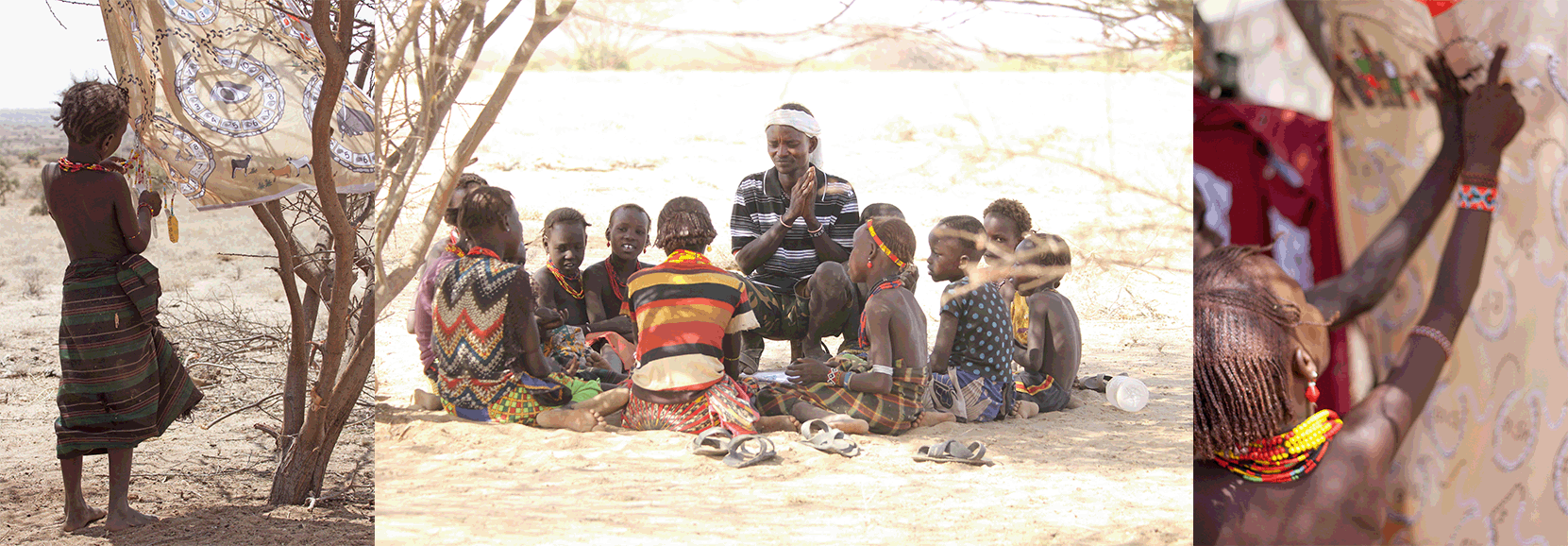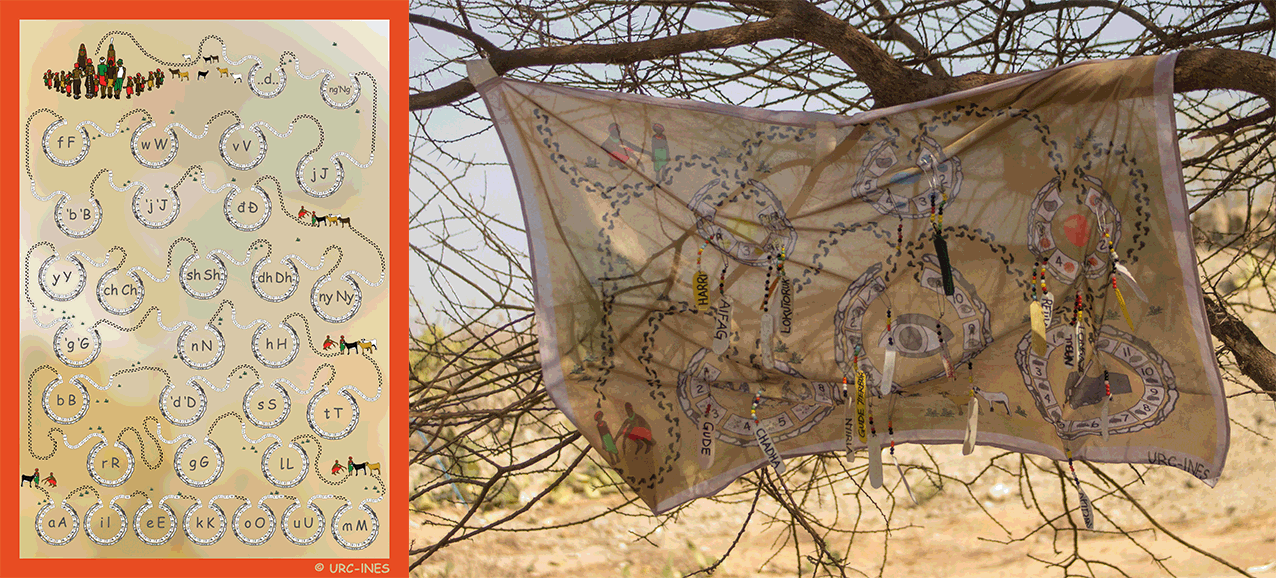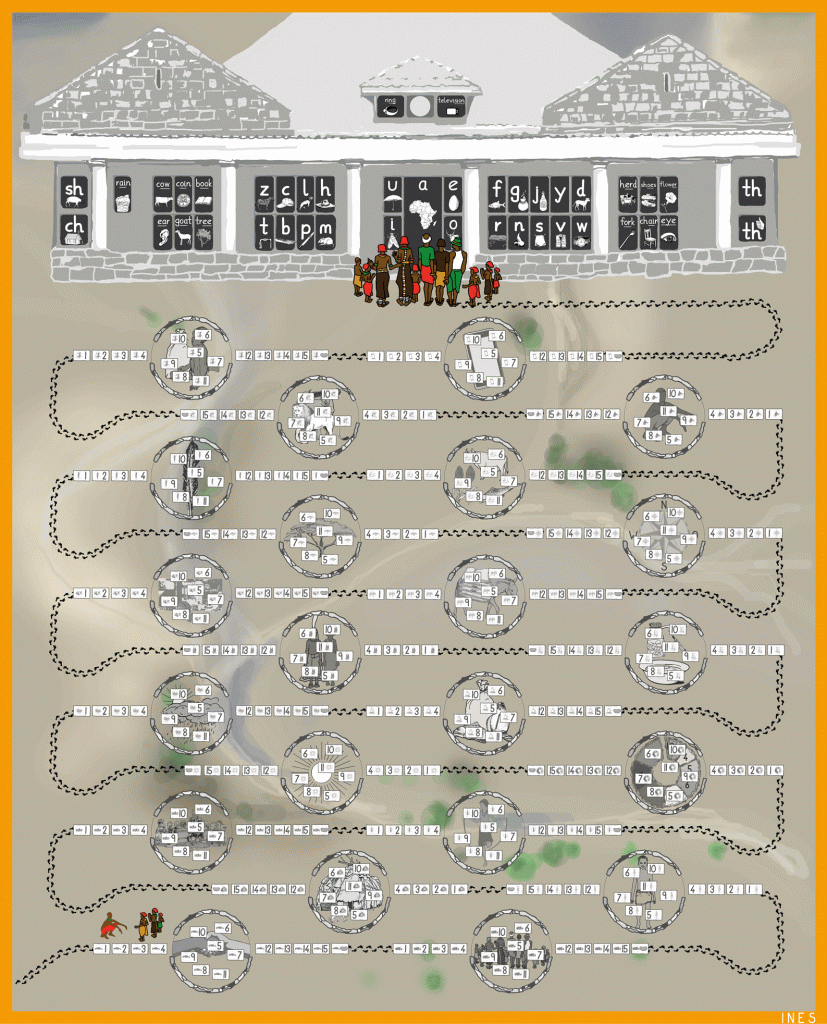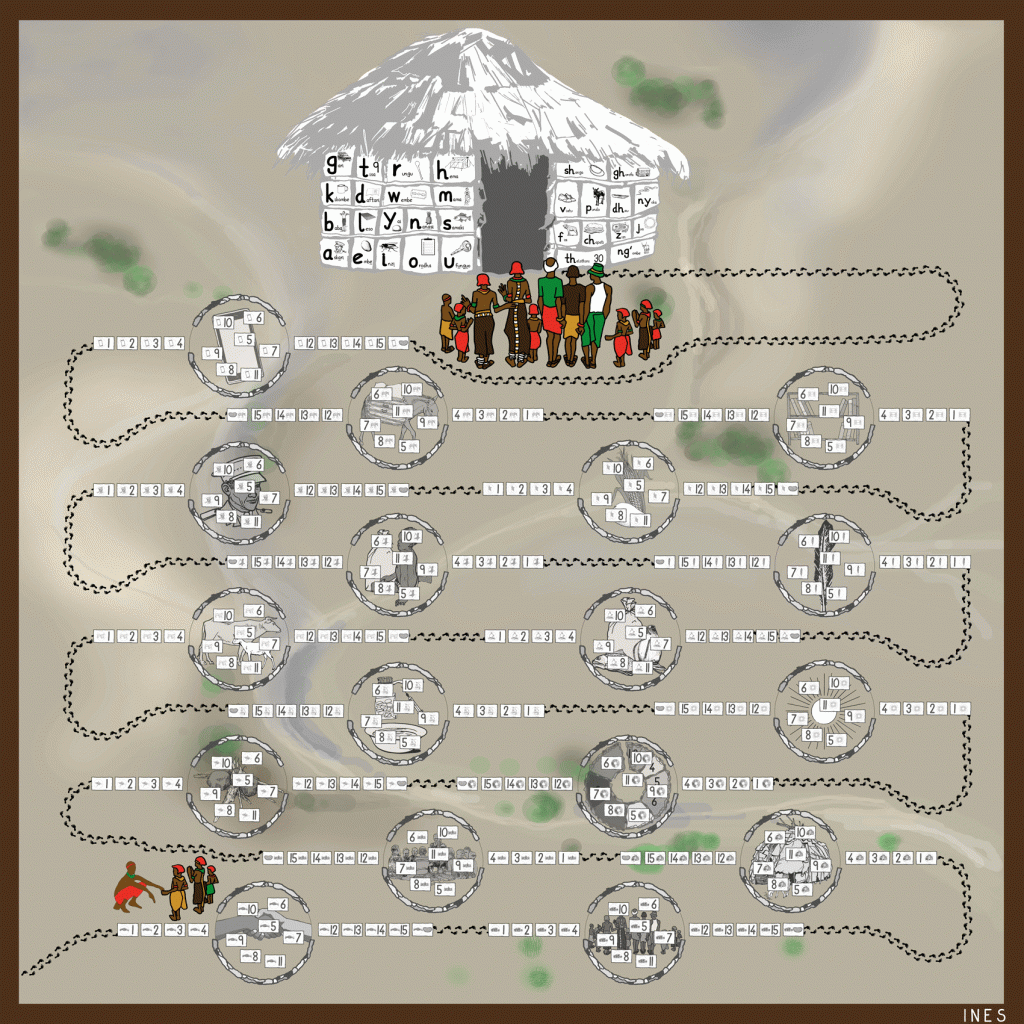
The starting point of the system Ladders of Learning is the idea of activity-based learning. The children – not the teacher – organise their learning process themselves. This is possible because the national curriculum of a particular subject is transformed into a learning plan. These visualised learning plans are called ladders of learning and create orientation and structure for the children. The design and layout of the ladders of learning for the mobile schools of the Daasanach consciously takes up the culture of the mobile pastoralists and is kept in the form of a path. The children follow the footsteps from one stock camp to the next and encounter a new learning content in each settlement. With a sophisticated logo and colour system and illustrated activity cards, the children are guided from the ladders of learning to the storage bags, the learning materials and the activity itself.

In the mobile schools, the learning activity is carried out either alone, with a partner, in a group or with the teacher – depending on the didactic idea of the activity. The teacher accompanies the children and supports them if they cannot solve a problem on their own. An integrated helper system and self-evaluations, as well as regular feedback from the teachers, ensure that each child’s learning process is self-regulated. The learners are gradually guided into self-responsibility, as they have an overview of their progress on the ladder of learning. The natural heterogeneity of learning groups and early school leaving is no longer an insurmountable problem, as the learning environment is so well equipped systematically, methodically and materially that the children can interrupt and resume their learning process according to their personal needs and circumstances. This is the case with Daasanach children, for example, if they shift with the small animals for a few days and then return to learning.

Since the children in mobile schools learn activity-based there is no need for permanent, direct instruction by the teacher. The teacher is significantly relieved and can concentrate on supporting individual children and organising the daily set-up and dismantling of the mobile learning arrangements. The learning materials are stored in transportable bags and fastened in trees and bushes. The teacher begins and ends the learning time with a plenary session in which community-promoting rituals such as singing, telling, praying and reading stories are celebrated. Reflection and feedback phases are also embedded in the assemblies.
Since INES’s mobile school system with ladders of learning is specifically designed for mobile communities, teachers themselves must also be mobile. The Daasanach themselves, therefore, select men and women from among their peers, who then undergo the INES teacher education programme. The training is designed “on the job”, divided into modules and is adapted to the mobile lifestyle of the pastoralists – this means that theoretical units alternate with practical units in the teacher training centre in Illeret.

Two ladders of learning, the Daasanach LL (left) and the Introduction LL (right) are already in use. The international project team is completing the Mathematics ladder of learning and is working on the ladders of learning for English and Kiswahili.



